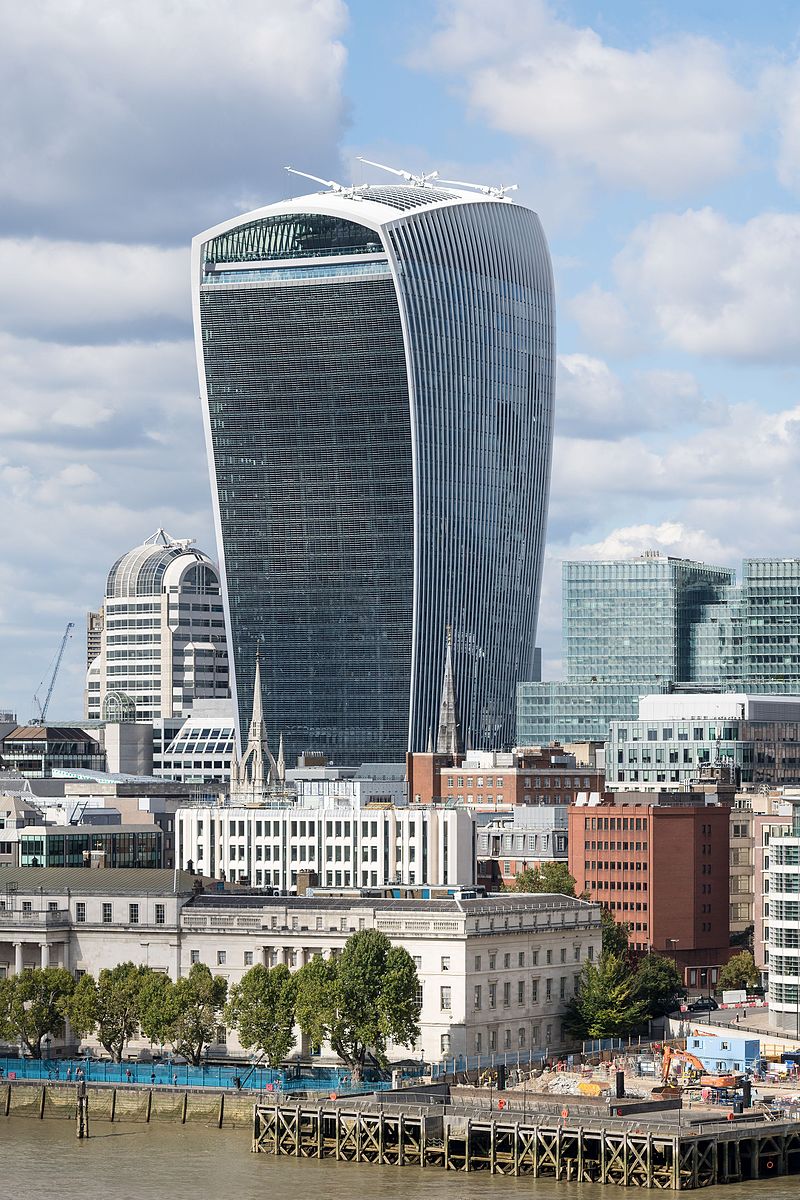The Weekly Reflektion 36/2024
Reduction in risk to an acceptable level presupposes that the potential threats and hazards associated with the operation or situation, are identified and then assessed. Often the risk assessment team uses previous experience to identify these threats and hazards, and limits themselves to these, after all what else could go wrong? Every so often a new hazard or threat pops up although sometimes when the new risk is investigated, it becomes apparent the hazard or threat wasn’t so new after all.
What else could go wrong?

In last week’s Reflektion week 35/2024, we emphasized the importance of considering the potential consequences from a hazards or threat, and not just the actual consequences from similar previous incidents. This week we will focus on identifying all the threats and hazards in risk assessments and not just the obvious ones and the ones that are covered in previous risk assessments.
20 Fenchurch Street is a commercial skyscraper in Londonand was nicknamed ‘The Walkie-Talkie’ because it resembleda walkie-talkie handset. Construction of the 38-storey, 160 mtall building was completed in spring 2014. The building was designed by architect Rafael Vinoly. In 2015 it was awarded the Carbuncle Cup for the worst new building in the UK in the previous 12 months.
When the building was being constructed it was discovered that the façade of the building behaved as a concave mirror and focused sunlight onto the streets below for about two hours a day. Temperatures in the street were measured to 117oC and the reflected heat damaged several cars and shop fronts. The building was soon renamed the ‘Walkie-Scorchie’ by the media. The architect made several excuses for the problem including claims that that louvre windows intended to prevent the problem had not been installed. Vinoly also blamed global warning and claimed the sun was higher in the sky than anticipated. He mentioned that when he visitedLondon it was always cloudy and that he couldn’t be expected to anticipate the problem. He eventually admitted that mistakes were made. A ‘brise soleil’ was eventually installed to deflect sunlight. Vinoly also designed the Vdara hotel in Las Vegas that had a similar sunlight reflection problem often termed the ‘Vdara death ray’. The glass in the Vdara hotel was coated with a non-reflective film to reduce the reflection.
An unexpected hazard claimed the lives of over 500 people in Italy’s worst railway disaster in March 1944. A freight train travelling from Naples to Potenza had to pass through the poorly ventilated Armi tunnel. The people on board weremostly illegal passengers trying to escape from the wartime fighting. Most were asleep as the journey was through the night. The tunnel had an incline, and high humidity had led to water condensing on the tracks. The wheels on the two steam engines started to slip, and the engineers piled on coal to get more power. The tunnel was soon filled with carbon monoxide laden smoke, and the train drivers and the people in the freight cars in the tunnel died of carboxyhemoglobin. Rescue workers recovering the bodies were shocked since there were no visible signs of why the people had died.
Using historical information and previous assessments as part of your risk assessment is a typical start point for a risk assessment. However, it cannot and must not limit your approach. The team needs to utilize their imaginations, both in the identification of hazards and threats, and the assessment of potential consequences.
